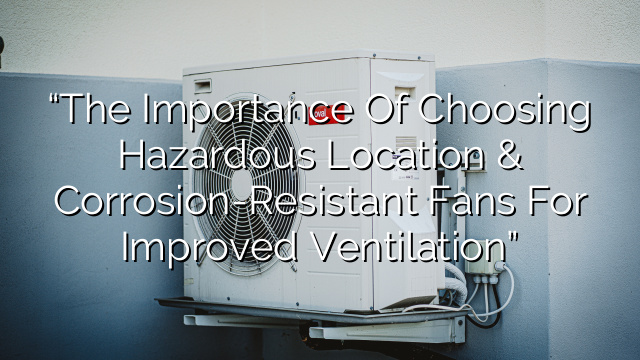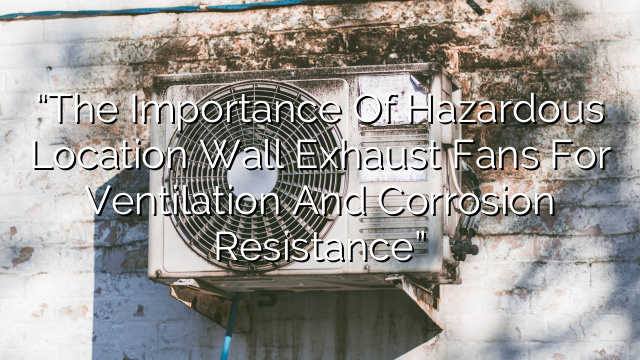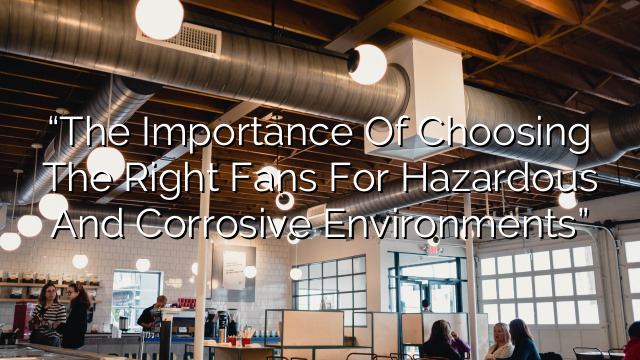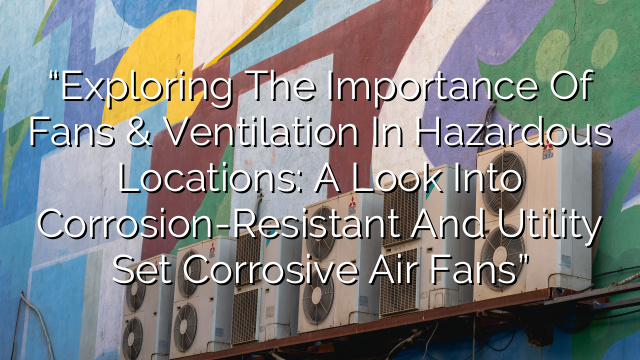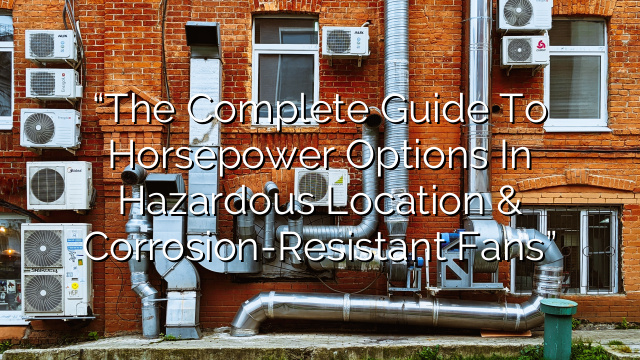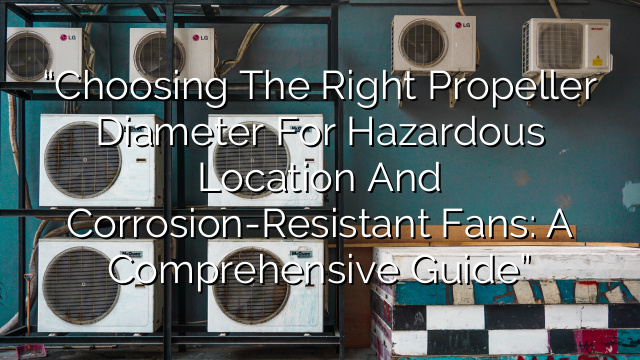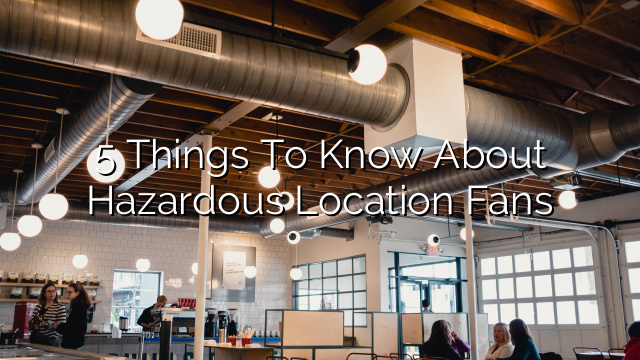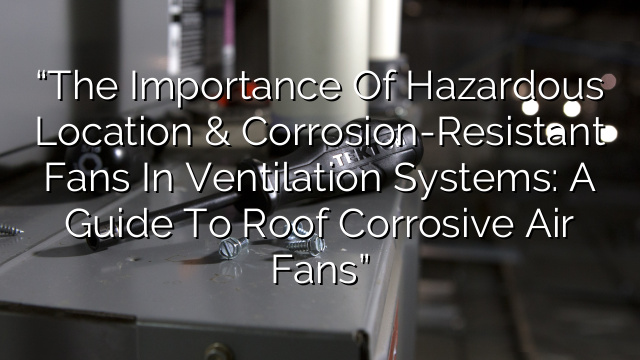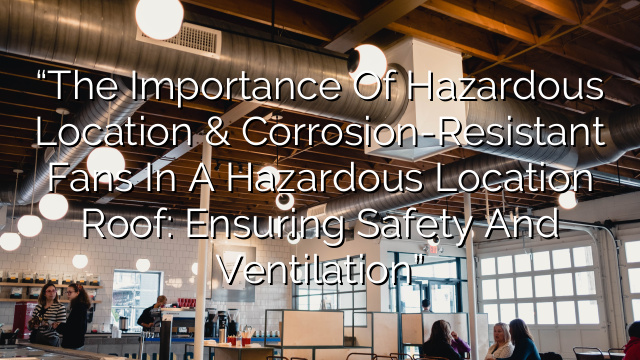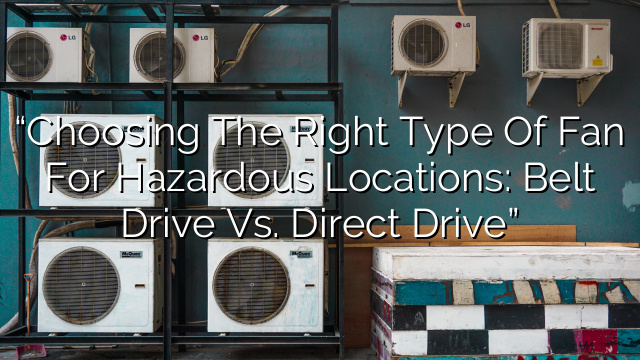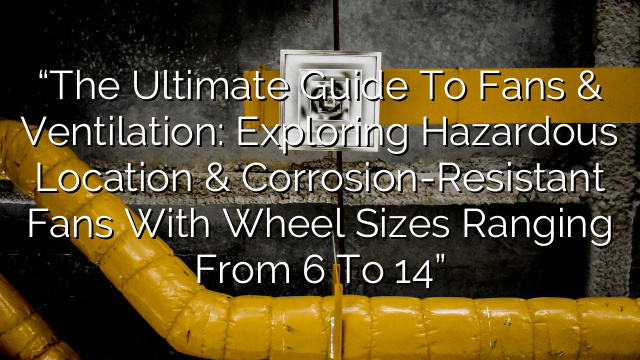The Importance of Choosing Hazardous Location & Corrosion-Resistant Fans for Improved Ventilation
Introduction
Ventilation plays a crucial role in hazardous locations such as chemical plants, oil refineries, and wastewater treatment facilities. In these environments, the presence of flammable gases, vapors, or combustible dusts poses a significant risk if not properly managed. One way to mitigate this risk is by using hazardous location and corrosion-resistant fans to ensure efficient and safe ventilation.
The Role of Fans & Ventilation in Hazardous Locations
Proper ventilation is essential in hazardous locations for several reasons:
- Vapour Control: Hazardous locations often involve the handling or storage of volatile chemicals. Ventilation systems help control and remove hazardous vapors, preventing them from accumulating and reaching explosive concentrations.
- Dust & Particle Removal: In industries dealing with combustible dusts, ventilation systems play a crucial role in removing these particles from the air. Accumulated dust can lead to explosions, making effective dust removal critical for worker safety.
- Temperature Control: Some hazardous processes generate significant heat. Ventilation systems help control the temperature and maintain a safe working environment by exhausting hot air and supplying cooler, fresh air.
- Improved Air Quality: Proper ventilation helps dilute and remove potentially harmful gases and odors, ensuring better overall air quality for workers in hazardous environments.
Choosing the Right Fans for Hazardous Locations
When it comes to selecting fans for hazardous locations, it’s important to consider two primary factors: hazardous location certification and corrosion resistance.
- Hazardous Location Certification: Fans used in hazardous locations must meet specific standards to ensure they can safely operate in potentially explosive atmospheres. The two most common certifications are Class/Division and Zone systems. Class/Division certifications are primarily used in the United States, while Zone certifications are more prevalent internationally.
- Corrosion Resistance: Hazardous environments are often characterized by corrosive gases, chemicals, or high humidity levels. Fans operating in these conditions must be made from materials that can withstand corrosion and maintain their performance over time. Common corrosion-resistant materials include stainless steel, fiberglass reinforced plastic (FRP), and aluminum with epoxy coatings.
Hazardous Location Utility Sets
Hazardous location utility sets are complete ventilation packages designed specifically for use in hazardous locations. These sets typically include an explosion-proof fan, motor, and all necessary accessories to ensure safe and effective operation. By choosing a pre-packaged utility set, facility managers can have peace of mind knowing all components are designed to work together and meet the necessary safety requirements.
Many hazardous location utility sets also offer additional features for optimal performance, such as:
- Variable Speed Control: This allows users to adjust fan speed according to ventilation needs, helping to optimize energy consumption and maintain desired airflow rates.
- Spark-Resistant Construction: Some utility sets feature spark-resistant construction to minimize the risk of ignition in environments where sparks could be generated by the fan or motor.
- Explosion-Proof Enclosures: These enclosures are designed to contain any potential explosions within the fan, preventing them from spreading to the surrounding area.
FAQ
Here are some frequently asked questions about hazardous location and corrosion-resistant fans:
- Why are hazardous location and corrosion-resistant fans necessary?
- Hazardous location and corrosion-resistant fans are necessary to ensure the safety and wellbeing of workers in environments where flammable gases, vapors, or combustible dusts are present. These fans are designed to operate safely in potentially explosive atmospheres and resist corrosion from corrosive gases or chemicals.
- What hazardous location certifications should I look for?
- The hazardous location certification you should look for depends on the location and applicable regulations. In the United States, Class/Division certifications such as Class I, Division 1 or Class II, Division 2 are common. For international applications, Zone certifications such as Zone 1 or Zone 2 are commonly used.
- What materials are commonly used for corrosion-resistant fans?
- Commonly used materials for corrosion-resistant fans include stainless steel, fiberglass reinforced plastic (FRP), and aluminum with epoxy coatings. These materials are chosen for their ability to withstand corrosion in harsh environments.
- Can I customize a hazardous location utility set?
- Yes, many manufacturers offer customizable options for hazardous location utility sets. This allows you to select the fan, motor, and accessories that best suit your specific application needs while still ensuring compliance with hazardous location standards.
- Are hazardous location utility sets suitable for all hazardous environments?
- While hazardous location utility sets are designed for a wide range of hazardous environments, it’s essential to consult with a knowledgeable expert to ensure the selected set is suitable for your specific application. Factors such as the presence of specific chemicals, dust concentrations, and site conditions can influence the suitability of a particular utility set.
In conclusion, choosing hazardous location and corrosion-resistant fans for improved ventilation in hazardous locations is crucial for maintaining worker safety and complying with regulations. By selecting fans that meet the necessary hazardous location certifications and are resistant to corrosion, facility managers can ensure efficient and reliable ventilation, leading to a safer work environment overall.

